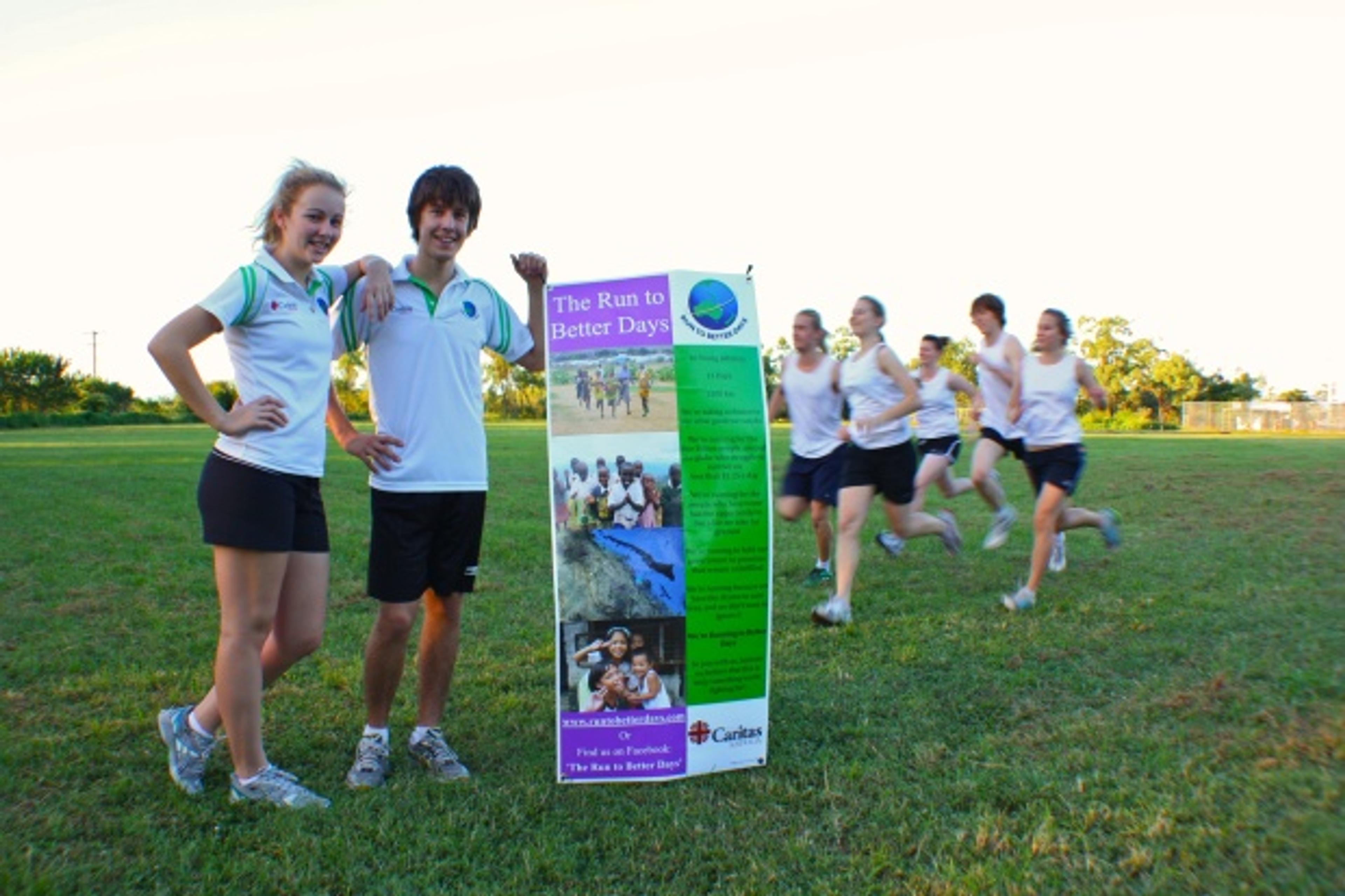The Run to Better Days is a fun example of how members of Giving What We Can in Australia - and their friends - are trying to spread the word about effective altruism. Here, organiser Brenton Mayer explains how the run works and asks how effective it's likely to be.

--
"Last July we ran 1,200 kilometres in a relay format up the coast of Australia. We raised $27,000 and stopped in along the way to speak at schools, Lions Clubs, Rotary Clubs and universities, presenting to around 10,000 people in total.
"We tried to frame global poverty as an ethically challenging issue which Australians can and should act upon, and we gave away 600 copies of Professor Peter Singer's The Life You Can Save to interested people.
"This year's run will be even bigger and kicks off today!
"Dan Charles started the Run to Better Days four years ago after reading Singer's book in his final year of school, knowing that he wanted to communicate its message to kids in schools in an exciting way. During the run, each runner covers about 10km each in a relay format. Fresh runners are brought by car every few hours, and in this manner we crawl along at roughly 100km a day. Our big not-so-secret secret of course, is that athletically it's not really that impressive, and the point of the run is all about talking to people about poverty.
"This year we have five speaking teams of two people. While the run is happening, they will drive to schools in the vicinity, and give presentations to students in their final two years of school. After this we speak at society meetings (primarily Rotary and Lions Clubs), with an appropriately adjusted pitch with more space for questions at the end, and give away just a couple of books. In my experience these are invariably pleasant evenings where we're made to feel very welcome by club members, and last year we were pleasantly surprised by just how many groups donated generously towards the run. The team members who aren't speaking drive to the accommodation. From there we organise the the next day, monkey around for a bit like groups of 20ish 20ish year olds do, and vote, upon hearing the embarrassing tales of the day, for who should be forced to wear the 'Donkey of the Day' pants for the next 24 hours."
Is the Run to Better Days effective altruism?
The run has been designed to maximise how many people we can get to think seriously about Singer's arguments on poverty. Our presentation starts off by introducing Singer's drowning child thought experiment, covers the basics of what extreme poverty is, compares extreme poverty with our own growing wealth, and then looks how much our society and our government are doing towards poverty alleviation at the moment. We then challenge our listeners with the question of, given all the above, what should we be doing? To help them answer that, we present some of the wonderfully straightforward calculations that show how much people living in developed countries can do for others, examples of which you can find here.
"After the talk we suggest that 'if anything we've said has struck a chord or seemed interesting, then the best thing to do is to read this book; The Life You Can Save.' We offer a free copy of the book, as well as a letter, to all who are interested and want to engage more with the ideas, spreading the message about how and why they can improve the world in the best way.
"Last year was the first year we did the run, so this year we have the opportunity to put into practice everything we learned from the operation in its test run, including follow up and keeping track of how many people remained interested. In the absence of that data, here are a couple of points on the way we've designed the The Run to Better Days that I hope point towards it being quite effective:
- By speaking at schools we reliably get large audiences for solid lengths of time, with little effort on our behalf relative to the difficulty in procuring other audiences. The basic idea is that we're young people with a little bit of street cred left, and we can say - "Hey kids, social justice is cool!"
- Kids in their final years of school are some of the best people to speak to about poverty because they're old enough to follow what you're saying, whilst being open minded and not automatically sceptical.
- The Run has allowed us to speak at a huge range of venues, including classes of 800 medical students, 1200 allied health students, and a Masters of Public Health class.
- We don't need a large percentage of people to read The Life You Can Save for giving out books to be effective: if 1% of the people who ask for a copy are affected, that makes 15 new people questioning seriously whether we should do a lot more about poverty.
- The run ends up being a common topic of discussion, so as a result we are prompted to explain Singer's idea and often have discussions as a result. If you'd like to get an idea of what's in the talk, get in touch as I can send you a low quality podcasted talk. Additionally, we would be happy to give out a transcript and a copy of our visual aids as well, if you'd like to present something similar.
"So, to summarise my answer to 'is the Run to Better Days Effective Altruism?': We're putting in a solid effort to try and make it as effective as possible, and with proper follow up, we will find out for sure this year."
--
You can follow the team's progress on facebook.